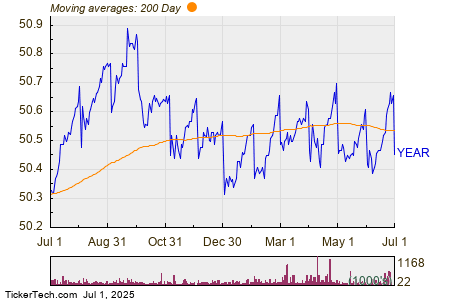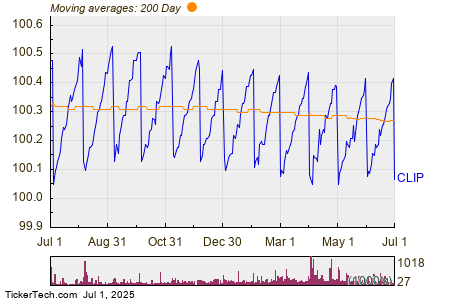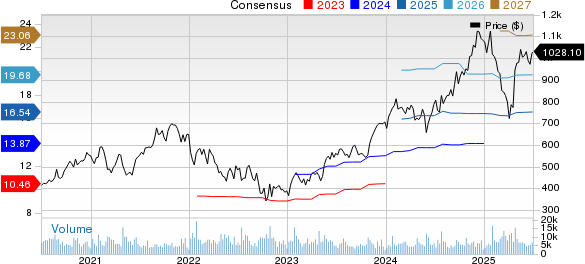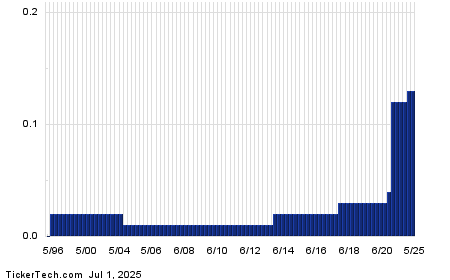Given its better prospects, we believe Philip Morris stock (NYSE: PM) is a better pick than Union Pacific stock (NYSE: UNP). Although these companies are from different sectors, they share similar market capitalizations of around $145-155 billion. The decision to invest often comes down to finding the best stocks within the ambit of certain characteristics that suit an investment style. Investors have assigned a higher valuation multiple of 6.2x revenues for Union Pacific stock versus 4.4x revenues for Philip Morris, partly due to its slightly superior revenue growth and profitability. In the sections below, we discuss the possible returns for UNP and PM in the next three years. We compare a slew of factors, such as historical revenue growth, stock returns, and valuation, in the sections below.
1. Philip Morris Stock Has Fared Better Lately
UNP stock has witnessed gains of 15% from levels of $210 in early January 2021 to around $245 now, while PM stock has witnessed gains of 20% from $85 to $100 over the same period. In comparison, the S&P 500 has seen a 40% rise over this roughly three-year period.
However, the increase in these stocks has been far from consistent. Returns for UNP stock were 21% in 2021, -18% in 2022, and 19% in 2023, while that for PM were 15%, 7%, and -7% over the same period, respectively. In comparison, returns for the S&P 500 have been 27% in 2021, -19% in 2022, and 24% in 2023 — indicating that UNP and PM underperformed the S&P in 2021 and 2023.
In fact, consistently beating the S&P 500 — in good times and bad — has been difficult over recent years for individual stocks; for other heavyweights in the Industrials sector, including CAT, GE, and RTX, and even for the megacap stars GOOG, TSLA, and MSFT. In contrast, the Trefis High Quality (HQ) Portfolio, with a collection of 30 stocks, has outperformed the S&P 500 each year over the same period. Why is that? As a group, HQ Portfolio stocks provided better returns with less risk versus the benchmark index; less of a roller-coaster ride, as evident in HQ Portfolio performance metrics.
Given the current uncertain macroeconomic environment with high oil prices and elevated interest rates, could UNP and PM face a similar situation as they did in 2021 and 2023 and underperform the S&P over the next 12 months — or will they see a strong jump? While we believe both stocks will see higher levels, PM may outperform UNP in the next three years.
2. Union Pacific’s Revenue Growth Is Slightly Better
Union Pacific has seen its revenue rise at an average annual rate of 7.6% from $19.5 billion in 2020 to $24.1 billion in 2023. Philip Morris saw its sales expand at a 7.1% average growth rate from $28.7 billion to $35.2 billion over the same period. Union Pacific’s revenue growth over the recent years has been driven by a strong recovery in demand after the pandemic-induced lockdowns. Furthermore, the company realized substantial pricing gains, passing on the higher costs and higher fuel prices to the customers. For perspective, the company’s average revenue per carload grew 18% between 2020 and 2023, while its total carload volume was up 5%.
Philip Morris sells its tobacco products in non-U.S. markets. Revenue is generated from the sale of cigarettes and its flagship smokeless tobacco offering – IQOS. In late 2022, Philip Morris acquired over a 90% stake in Swedish Match AB in a $16 billion deal, which has strengthened its position in smokeless products. IQOS has been growing strongly and leading the growth for Philip Morris. In fact, it has surpassed the Marlboro brand in terms of revenue.
Our Union Pacific Revenue Comparison and Philip Morris Revenue Comparison dashboards provide more insight into the companies’ sales. Looking forward, Philip Morris’ revenue growth is expected to be in mid-single-digits average rate over the next three years, driven by its IQOS and smokeless products. Union Pacific will likely see its top line expand at a low-single-digit average rate as a weak demand environment weighs on railroad business in the near term.
3. Union Pacific Is More Profitable
Union Pacific’s operating margin has declined slightly from 40.1% in 2020 to 37.7% in 2023, while that for Philip Morris has declined from 40.3% to 34.6% over the same period. Looking at the last twelve-month period, Union Pacific’s operating margin of 38% fares better than 34.8% for Philip Morris.
Looking at financial risk, both are comparable. While Philip Morris’ 31% debt as a percentage of equity is higher than 23% for Union Pacific, its 5% cash as a percentage of assets is higher than 2% for the latter. This implies that Union Pacific has a better debt position, but Philip Morris has more cash cushion.

4. The Net of It All
We see that Union Pacific has seen a slightly better revenue growth, is more profitable, and has a better debt position. On the other hand, Philip Morris has more cash cushion. Now, looking at prospects, using P/S as a base, due to high fluctuations in P/E and P/EBIT, we believe PM will offer better returns over Union Pacific in the next three years.
If we compare the current valuation multiples to the historical averages, PM fares better. Union Pacific’s stock is trading at 6.2x revenues, marginally above its last five-year average of 6.0x. In comparison, Philip Morris’ stock trades at 4.4x revenues, lower than its last three-year average of 4.6x. Overall, we think PM will outperform UNP in the next three years, driven by continued expansion of IQOS.
While PM may outperform UNP in the next three years, it is helpful to see how Union Pacific’s Peers fare on metrics that matter. You will find other valuable comparisons for companies across industries at Peer Comparisons.
| Returns | May 2024 MTD [1] |
2024 YTD [1] |
2017-24 Total [2] |
| UNP Return | 3% | -1% | 135% |
| PM Return | 5% | 6% | 9% |
| S&P 500 Return | 5% | 11% | 137% |
| Trefis Reinforced Value Portfolio | 7% | 7% | 657% |
[1] Returns as of 5/21/2024
[2] Cumulative total returns since the end of 2016
Invest with Trefis Market-Beating Portfolios
See all Trefis Price Estimates
The views and opinions expressed herein are the views and opinions of the author and do not necessarily reflect those of Nasdaq, Inc.








